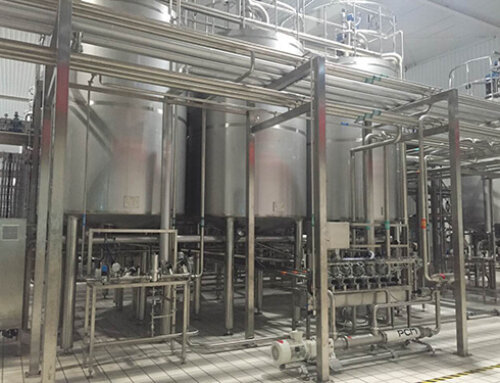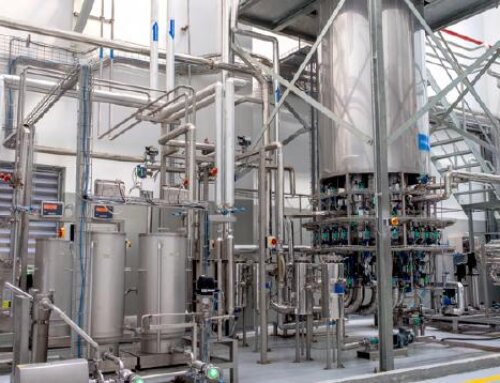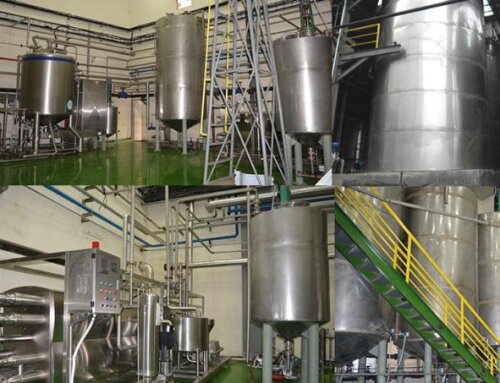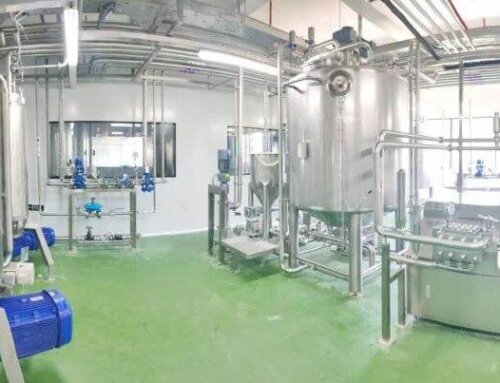Vacuum Mixing Tank Application
Vacuum mixing tanks are commonly used in the food and beverage industry for various applications such as mixing, emulsifying, homogenizing, and dissolving ingredients. These tanks are designed to create a vacuum environment that can be used to remove air from the mixing chamber, which helps to prevent oxidation and spoilage of the ingredients. Here are some specific applications of vacuum mixing tanks in the food and beverage industry:
- Mixing of ingredients: It is used to mix ingredients together when making sauces, ketchup, jam, butter, mayonnaise, dressings, and margarine. The vacuum environment helps to prevent oxidation of the ingredients, resulting in a more uniform texture.
- Emulsification: Vacuum mixing tanks can be used to emulsify ingredients such as oil and water, which are typically difficult to mix together. By creating a vacuum environment, the ingredients can be mixed together more effectively, resulting in a smooth and stable emulsion. When making mayonnaise, custard sauce, is the most used.
- Homogenization: Vacuum mixing tanks can also be used for homogenization, which is the process of breaking down large particles into smaller ones. This is often used in the dairy industry to create a smooth and consistent texture in products such as milk and ice cream.
- Ingredients dissolving: When the high-speed agitator is equipped, vacuum mixing tanks are used to dissolve ingredients such as sugar or powder in liquids. The vacuum environment helps to speed up the dissolution process and also helps to prevent the formation of air bubbles. When the mixing tank is used for dissolving, it is mainly used for milk powder reconstitution, white sugar and colloid dispersion, infant formula milk powder industry.

Vacuum Mixing Tank Structure and Working Process
The tank is typically made of SUS304 or SUS316L and consists of several components that work together to mix, emulsify, homogenize, or dissolve ingredients. The vacuum mixing tanks system is composed of the following several parts:
- Mixing tank body: The mixing tank body is the main component, where the ingredients are mixed together, the tank volume can be customized according to the different processing capacities.
- Agitator: The agitator is a rotating device that mixes the ingredients and helps to create a uniform texture. The agitator type and stir rotation speed can be customized according to the client’s different ingredients.
- Vacuum Pump: The vacuum pump is used to create a vacuum environment inside the mixing tank.
- Condenser: A condenser’s primary function is to cool and condense the vapors that are produced inside the mixing chamber during the vacuum process. The condenser in a vacuum mixing tank typically consists of a heat exchanger that is cooled by a refrigeration system.
- Heating or Cooling Jacket: The tank jacket can be fed into by heating medium( Hot water or steam) or cooling medium(cooling water, chill water or ethylene glycol) to heat or cool ingredients.
- Valves and ports: material inlet and outlet, hot/cold medium inlet and outlet, CIP cleaning port, sample valve, etc.
- Control system: A control panel is used to operate and monitor the mixing process, including the vacuum pump, agitator, and temperature control system, it mainly includes temperature sensor, flowrate sensor, level sensor, etc.
Working process:
Ingredients are fed into the mixing chamber through the inlet valve, the agitator is turned on, and start mixing all the ingredients together. During the ingredients mixing, the vacuum pump is turned on, creating a vacuum environment inside the mixing tank. The hot or heating medium can also be fed into the tank jacket to heat or cool the ingredient during the mixing process according to different mixing processes. The ingredients are mixed together for a set amount of time and a certain temperature until they reach the desired texture or consistency, the outlet valve is opened, and the mixture is removed from the mixing chamber.

Vacuum Mixing Tank Feature
- Made of SUS304/316L material, the tank inlayer is 300mesh polished, and the out layer is 200mesh polished, meeting the requirements of food production.
- Equipped with a CIP cleaning ball, which can effectively clean the tank without any dead angle after production is finished.
- Most suitable for mixing liquid/liquid, solid/liquid, powder/liquid, up to 80% solid content, can handle products with extremely high viscosity.
- The vacuum tank plate thickness is 3-6mm depending on different applications, pressure and volume.
- The effective volume of the vacuum mixing tank is from 500L-15000L.
- Different agitator(anchor type, paddle type, frame type, etc) is available and the agitator speed is variable speed controlled by the inverter.
- The vacuum system can prevent air and bubbles when mixing or dissolving ingredients.
- The ingredients can be heated or cooled by the hot medium or cooling medium feeding into the tank jacket.
- World-class control elements such as SIEMENS PLC, JUMO temperature sensor, IFM level sensor, Mettler Toledo load cells, Danfoss inverter, SEW reducer, etc.
- Fully automatic temperature control system and level control system.
- It can be equipped with a weighing system, automatic ingredients feeding system, material discharging system, and formula Water Counting System according to clients’ different requirements.
- Closed production greatly reduces dust pollution. The system is equipped with production, cleaning and operation reports. Production, cleaning and operation data are traceable.

Technical Parameter
| Model | Volume | Dimension | Power | Agitator Speed |
|---|---|---|---|---|
| MTB-500 | 500L | φ800*H2140mm | 2.2KW | 0-60RPM |
| MTB-1000 | 1000L | φ1050*H2380mm | 3KW | 0-65RPM |
| MTBY-2000 | 2000L | φ1340*H2760mm | 4KW | 0-65RPM |
| MTBY-3000 | 3000L | φ1540*H3050mm | 5.5KW | 0-65RPM |
| MTB-4000 | 4000L | φ1650*H3200mm | 9KW | 0-65RPM |
| MTB-5000 | 5000L | φ1780*H3250mm | 11KW | 0-60RPM |
| MTB-10000 | 10000L | φ2300*H4050mm | 15KW | 0-60RPM |
| MTB-15000 | 15000L | φ2540*H4700mm | 22KW | 0-60RPM |




